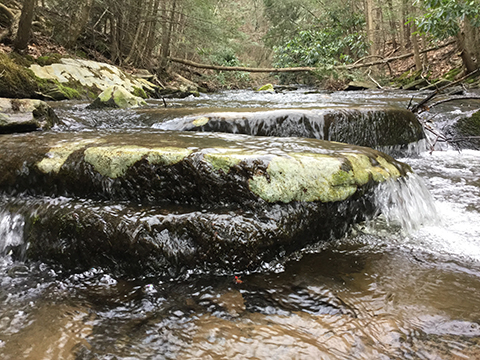News

Importance of HQ and EV Streams

By Rachel Posavetz, Watershed Specialist.
Since the Clean Water Act of 1972, states have developed their own water quality standards, such as special protection designations for qualifying surface waters (streams and lakes). The purpose is to protect, by law, human and ecological uses such as water supply, recreation, and aquatic habitat.
To provide sufficient protection to Pennsylvania’s highest quality waters, the special protection designations of “High Quality” and “Exceptional Value” were established. These designations fall under PA Chapter 93 water quality standards.
High Quality (HQ) and Exceptional Value (EV) designations are reserved for the cleanest waters in all of Pennsylvania, which are considered important natural resources to be properly protected and maintained. Most impressively, all of the surface waters in Pike County, excluding the Delaware River, are designated as either HQ or EV.
Tourism and outdoor recreation, largely drawn by Pike County’s clean lakes and fishing streams, are significant sources of economic value. For example, the Pocono Mountains region draws $3.3 billion annually in tourism revenue, according to the Pocono Mountains Visitors Bureau.
How Do Surface Waters Qualify as High Quality or Exceptional Value?
High Quality (HQ) Waters must meet specific chemistry or biological conditions, if not both. The chemistry standards must include at least one year of water quality data meeting scientific criteria established within Chapter 93 of the PA Code, measuring specific parameters such as dissolved oxygen, temperature and pH (acidity & alkalinity) among others.
For biological conditions to be met, a high quality aquatic community must be supported in that water body. As determined by Environmental Protection Agency (EPA) assessment protocols, the benthic macroinvertebrate (aquatic insects, shellfish, etc.) community must receive a health rating of at least 83%. Lastly, “Class A wild trout streams” as designated by PA Fish and Boat Commission (PAFBC), will qualify a surface water as HQ.
Exceptional Value (EV) Waters are those that will firstly meet HQ standards, and one of several other factors that qualify the surface water for additional protection. These other qualifying conditions include:
- the surface water being located in a refuge or protection area or a state or federal special designation area
- the surface water being designated as a PAFBC “wilderness trout stream,” or designated as “exceptional recreational significance”
- if the surface water scores 92% or higher on the EPA bioassessment protocol for benthic macroinvertebrate community (aquatic insects, shellfish, etc.)
A surface water designated as having an “exceptional ecological significance” is considered EV without requiring any other standards to be met.
So What Does this Mean?
To ensure protection of HQ and EV surface waters, the PA Department of Environmental Protection (DEP) requires specific authorization for certain types of disturbance activities in or near these areas.
The Conservation District is the local clearinghouse for information and technical assistance related to projects in or around HQ and EV waterways. Contact the District for more information before starting your project.
Additional Facts & Benefits:
- HQ and EV designations do not impact activities existing prior to the designations being placed; they have been grandfathered.
- Municipal governments are not liable for cleaning up streams nor required to change local ordinances.
- Many common activities are not impacted such as most road maintenance projects, most farm practices, and on-lot sewage systems.
- HQ and EV designations can improve your local area via increasing the chance of receiving funding for upgraded wastewater treatment facilities and increasing your funding amount through PA Dirt, Gravel, and Low Volume Road Maintenance Program grants.
- EV designation prevents radioactive and hazardous waste disposal facilities from being located in your watershed.
Sources:
https://www.pacode.com/secure/data/025/chapter93/chap93toc.html
https://www.lccd.org/wp-content/uploads/2015/03/spd_effects.pdf
